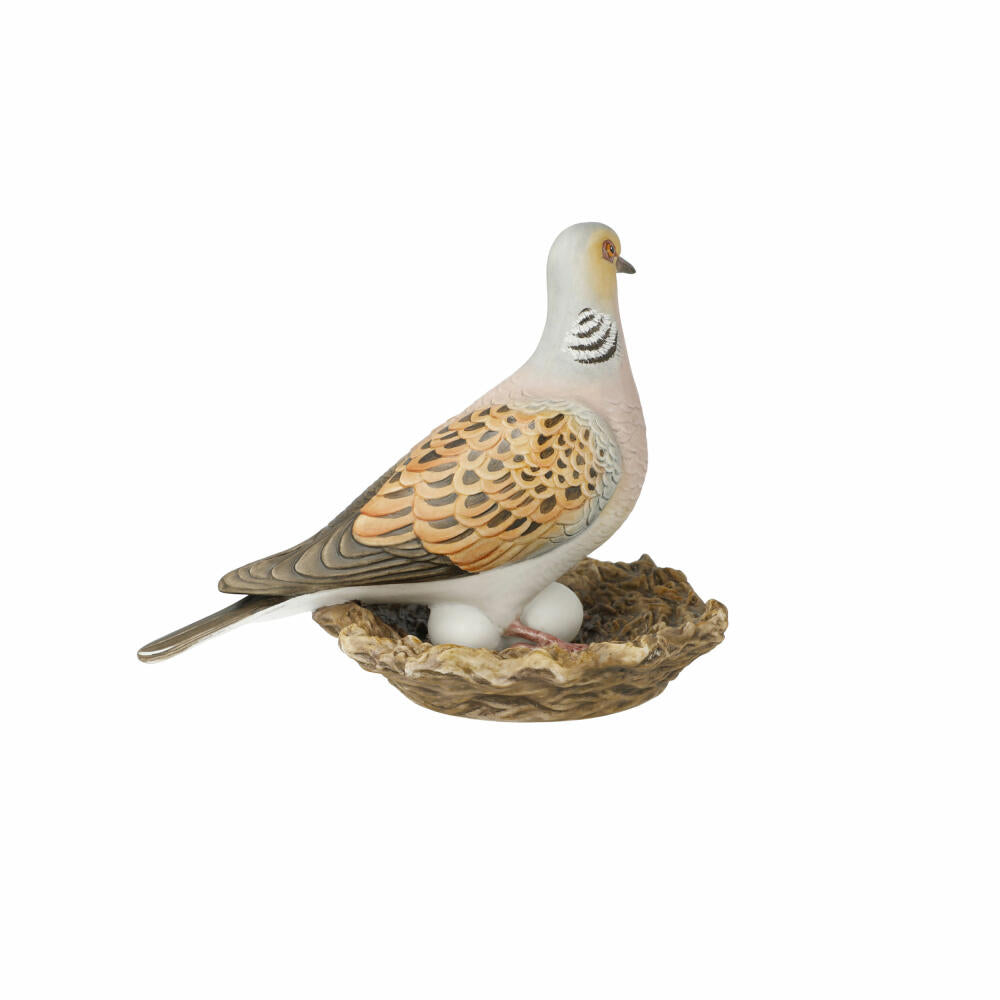1
/
of
1
Goebel Porzellan GmbH
Goebel Figurine Turtledove Large, Bird of the Year 2020, Collectible Figure, Dove, Porcelain, Colorful, 14 cm, 38473211
Goebel Figurine Turtledove Large, Bird of the Year 2020, Collectible Figure, Dove, Porcelain, Colorful, 14 cm, 38473211
Regular price
€79,00 EUR
Regular price
€79,00 EUR
Sale price
€79,00 EUR
Taxes included.
Shipping calculated at checkout.
Auf Lager: In 1-3 Tagen bei dir
Quantity
Couldn't load pickup availability
Turtle dove (Streptopelia turtur)
The turtle dove is considered a messenger of luck or love, but its real living conditions are less romantic. After losing almost 90% of its German population since 1980, the species is now highly endangered. Whole areas are now free of turtle doves. Originally found in alluvial forests and forest edges as well as around clearings, the turtle dove's preferred habitats are now in the cultivated landscape used by humans with field copses and hedge structures or in sparse forests with undergrowth, but sometimes also in villages or settlements or on former military training grounds or in gravel and coal mining areas. The turtle dove prefers to stay where it can find sufficient and pesticide-free seeds of wild herbs and water to drink. Ideally, a mosaic of different types of land use and crops offers it a rich food source throughout the breeding season. The turtle dove is the only one of our native pigeons that lives as a migratory bird, exposing itself to new dangers such as climate change, the loss of habitats in the Sahel zone, and legal and illegal hunting in the Mediterranean. Visually, the turtle dove is unmistakable among native pigeons. The most striking feature is its colorful plumage, which seems almost exotic. Its clearly layered, dark tail with a white tip is also unmistakable. The top of the head and the outer upper wing coverts appear blue-gray. In contrast, the back and inner upper wing coverts are rust-brown with black feather centers. The sides of the turtle dove's neck are decorated with a black and white striped spot. The throat and chest are delicately reddish in color. A clearly reddish eyelid ring surrounds the orange-red eye.
Dimensions (L/W/H):
17.50 / 12.00 / 14.00
Material: Porcelain
Series: Coll. Birds
Color: Colorful
Manufacturer article number: 38473211
The turtle dove is considered a messenger of luck or love, but its real living conditions are less romantic. After losing almost 90% of its German population since 1980, the species is now highly endangered. Whole areas are now free of turtle doves. Originally found in alluvial forests and forest edges as well as around clearings, the turtle dove's preferred habitats are now in the cultivated landscape used by humans with field copses and hedge structures or in sparse forests with undergrowth, but sometimes also in villages or settlements or on former military training grounds or in gravel and coal mining areas. The turtle dove prefers to stay where it can find sufficient and pesticide-free seeds of wild herbs and water to drink. Ideally, a mosaic of different types of land use and crops offers it a rich food source throughout the breeding season. The turtle dove is the only one of our native pigeons that lives as a migratory bird, exposing itself to new dangers such as climate change, the loss of habitats in the Sahel zone, and legal and illegal hunting in the Mediterranean. Visually, the turtle dove is unmistakable among native pigeons. The most striking feature is its colorful plumage, which seems almost exotic. Its clearly layered, dark tail with a white tip is also unmistakable. The top of the head and the outer upper wing coverts appear blue-gray. In contrast, the back and inner upper wing coverts are rust-brown with black feather centers. The sides of the turtle dove's neck are decorated with a black and white striped spot. The throat and chest are delicately reddish in color. A clearly reddish eyelid ring surrounds the orange-red eye.
Dimensions (L/W/H):
17.50 / 12.00 / 14.00
Material: Porcelain
Series: Coll. Birds
Color: Colorful
Manufacturer article number: 38473211
Produktsicherheit ▼
Hersteller:
Goebel Porzellan GmbH
Auwaldstr. 8, 96231 Bad Staffelstein, Deutschland
E-Mail: goebel@goebel.de


